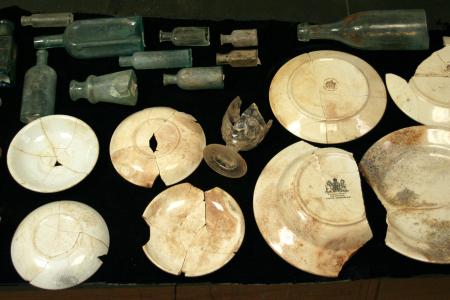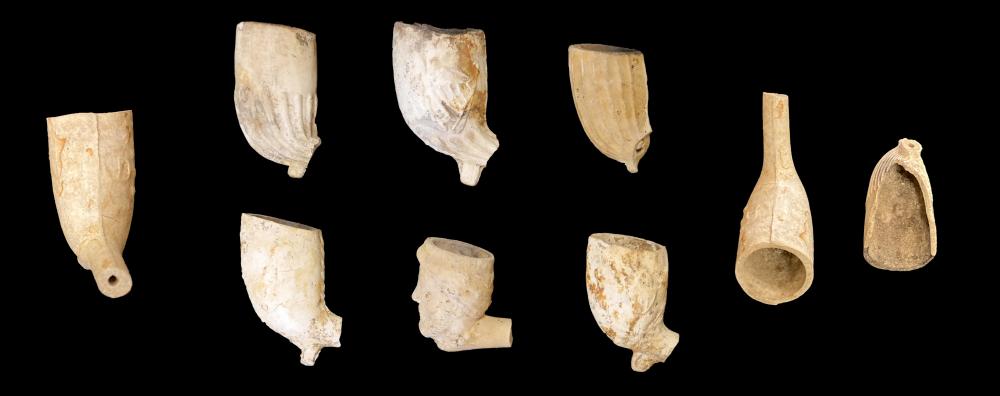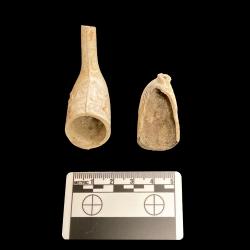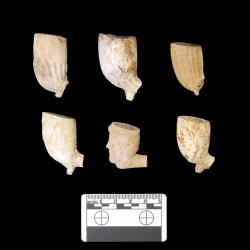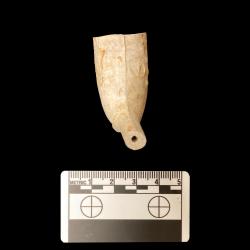Ball clay tobacco pipe fragments are one of the most common artifacts found on archaeological sites from the 17th through the 19th centuries. There are many reasons for this including the fact that most people smoked, tobacco pipes were relatively cheap and broke easily, and they survive well in the archaeological record. Tobacco pipes were also a mobile form of material culture. Unlike ceramics, for example, pipes could be easily transported from one setting to the next. Thus, they could be broken and discarded in any number of indoor, outdoor, public, and private venues. This mobility between social settings makes pipe assemblages one of the most promising data sets for studying the dynamic nature of a human agency.
Archaeological literature on seventeenth- and eighteenth- century tobacco pipes is plentiful while research on nineteenth century assemblages has lagged. A study of mid-nineteenth century pipe assemblages is being undertaken by archaeologists at the New York State Museum to determine the level of diversity within the assemblages and what that might tell us about the lives of the household occupants.
Ten primarily working-class household assemblages dating from 1825 to 1870 are being analyzed for bowl capacity, level of diversity, usage, decoration, bowl dimension, and other distinguishing criteria. One observation was the level of staining from soot as an indication of which pipes were most heavily used. One finding is that although nearly 50 specific types were identified in the assemblages, most types contained examples of moderate to heavy staining.
When we grouped those pipes by general decorative theme, however, we discovered something interesting among the top four categories. Between 63 and 65 percent of fluted, undecorated, and floral pipes exhibited moderate to heavy staining while only 38 percent of pipes with patriotic decorative motifs were heavily used. The analyses are ongoing, but this preliminary finding suggests that patriotic pipes may have been used for special occasions rather than everyday use. This is one example of how this study will demonstrate the utility of this material type for answering important questions about past human agency. Other preferences such as bowl capacity and decoration will be compared with household composition and other variables.


